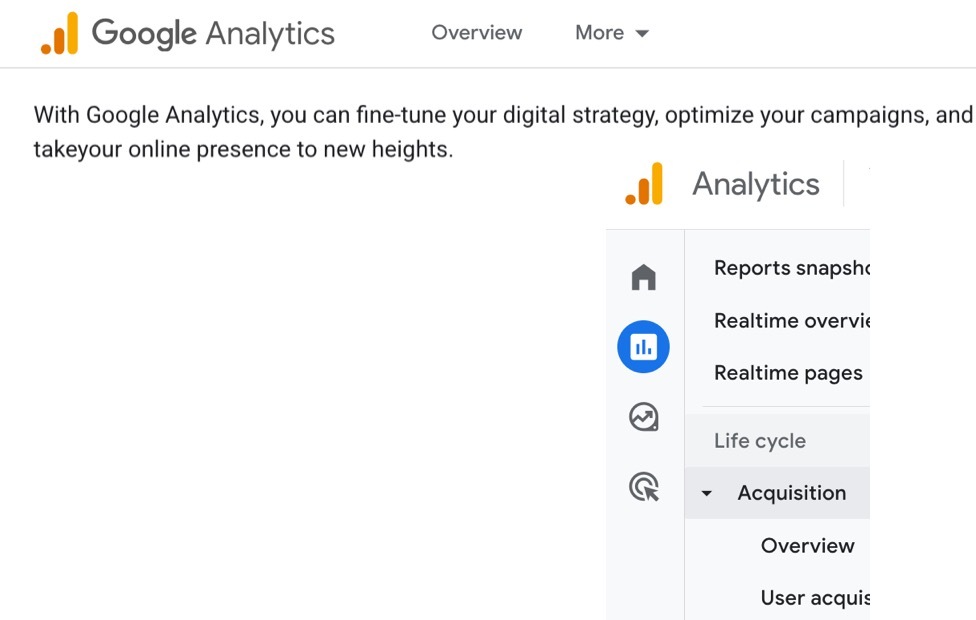Content marketing only proves its value when it drives measurable business results.
Yet, for many marketing managers, quantifying ROI remains a gray area.
How do you draw a straight line from a blog post or a LinkedIn update to pipeline or revenue?
The challenge lies in content marketing’s wide scope—from brand awareness to lead nurturing—which often makes ROI feel intangible.
But it doesn’t have to be.
With the right frameworks, tracking systems, and benchmarks, you can turn content performance into a data-backed conversation with your stakeholders.
In this guide, you’ll learn how to:
- Define what content marketing ROI really means (and what it doesn’t)
- Identify the metrics that matter most to your goals
- Use a step-by-step process to measure ROI effectively
- Solve common challenges in content attribution
- Use tools that streamline tracking and reporting
Whether you're optimizing existing efforts or building a measurement framework from scratch, this post gives you the playbook to make content decisions with confidence.
Let’s get started!... 🚀
What Exactly Is Content Marketing ROI?
Understanding ROI in Content Marketing
ROI stands for "Return on Investment," and in the context of content marketing, it measures the profitability of your efforts.
It tells you whether the money and resources you're putting into content creation are translating into tangible business benefits.
Here’s a straightforward way to think about Content Marketing ROI:
- ROI = (Return from Investment - Cost of Investment) / Cost of Investment
This formula might look simple, but the real challenge comes in defining and quantifying the “returns” and “costs” associated with content marketing.
Breaking Down the Components
1. Return from investment
This includes all the benefits your business gains from content marketing.
These can be:
2. Cost of investment
These are the expenses involved in creating and distributing your content.
They generally include:
Tangible vs. Intangible Benefits
While direct revenue from a content piece is a tangible benefit, content marketing also offers intangible benefits that can be just as valuable.
These include enhanced brand reputation, increased customer loyalty, and improved visibility in search engine results.
Quantifying these intangibles can be challenging but not impossible.
It’s crucial to set clear, measurable goals for each content marketing initiative.
This could range from increasing organic traffic by 20% to generating 50 new leads per month.
By tying your content directly to these goals, you can more effectively measure the real ROI.
By understanding and applying this comprehensive approach to calculating content marketing ROI, you can begin to see not just the direct, but also the long-term benefits of your investments.
This clarity will empower you to make more informed decisions about where to allocate resources for the highest returns.
Always consider both the immediate and potential future returns when evaluating your content marketing’s effectiveness.
This dual-view ensures you recognize value that might not be immediately apparent but could lead to significant gains in the future.
Top Metrics to Track for Measuring Content Marketing ROI
To effectively measure the ROI of your content marketing efforts, it's crucial to focus on specific metrics that align with your business goals.
Here's a breakdown of the essential metrics to track:
1. Website Traffic
- Total visits—indicates the overall draw of your content.
- Traffic sources—helps you understand where your audience is coming from (organic, direct, social, referral).
- Pages per session—reflects engagement levels; more pages often mean more interest.
🔍 Use tools like Google Analytics for a deep dive into your traffic data.
This can help you identify which pieces of content are driving the most traffic and from which channels.
2. Lead Generation
- Number of leads—tracks how many potential customers your content is attracting.
- Lead quality—assesses how likely leads are to convert based on their engagement with your content.
Align your content with different stages of the buyer’s journey.
Tailored content can help improve lead quality by addressing specific customer needs and concerns.
3. Conversion Rates
- Conversion rate by content type—measures how different types of content (blogs, videos, infographics) perform in converting users.
- Bounce rate—indicates the percentage of visitors who leave after viewing only one page, helping you gauge content effectiveness.
Segment conversion rates by user action (e.g., downloads, sign-ups, purchases) to understand which content drives tangible actions. 📊
4. Social Media Engagement
- Likes, shares, comments—these metrics provide insights into how engaging and shareable your content is.
- Follower growth—helps track the long-term engagement and brand loyalty.
Leverage social media analytics tools to track these metrics across platforms for a comprehensive view of your content’s performance.
5. Sales Revenue
- Direct sales from content—direct revenue generated from CTAs within your content.
- Influenced sales—sales where content played a known role in the customer’s decision-making process.
Connect your CRM and analytics to trace sales back to specific content pieces, providing clear evidence of content-driven revenue.
By closely monitoring these metrics, you not only gauge the effectiveness of your content marketing strategies but also align your efforts with overarching business objectives.
This focus ensures that every piece of content you create contributes to tangible business growth, making your ROI measurement both meaningful and actionable.
Step-by-Step Process to Measure Content Marketing ROI
Measuring your content marketing ROI doesn't have to be a daunting task.
Here’s a clear, actionable guide to ensure you’re not just throwing content into the void but are making strategic decisions that drive real business growth.
Step 1: Define Clear Objectives and KPIs
If lead generation is the goal, your KPIs might include the number of new leads and the conversion rate from lead to customer.
Make your goals SMART (Specific, Measurable, Achievable, Relevant, Time-bound) to enhance goal clarity and focus.
Step 2: Track Your Investments
Use project management tools to track time spent on content-related tasks, giving you a clearer picture of investment.
Step 3: Implement Tracking Mechanisms
Ensure that every piece of content has a unique tracking code or URL to simplify the analytics process.
Step 4: Analyze Performance
Create dashboards in your analytics tools to get a real-time view of how content is performing against your KPIs.
Step 5: Calculate ROI
Regularly refine your calculation methods as you pinpoint more precisely how content influences customer behavior and business outcomes.
Step 6: Report and Refine
By following these steps, you’ll not only gauge the effectiveness of your current content marketing strategies but also lay a robust foundation for scaling your content efforts aligned with your business growth goals.
Each piece of content becomes a measurable investment toward your company’s success.
5 Challenges in Measuring Content Marketing ROI
Measuring the ROI of your content marketing efforts can be as challenging as it is crucial.
Understanding these challenges is the first step towards overcoming them and achieving a clearer, more accurate measure of your content's impact.
1. Data Integration Issues
Different tools and platforms often operate in isolation, making it difficult to consolidate data for a comprehensive analysis.
Invest in integration tools that consolidate data from various sources, such as CRM systems, analytics platforms, and advertising networks into a centralized dashboard.
Utilize APIs or third-party integration services like Zapier to automate data flow between platforms.
2. Long Conversion Cycles
In content marketing, the journey from content engagement to actual sales can be lengthy, complicating ROI calculations.
Use multi-touch attribution models to track and value each interaction a customer has with your content over time.
Patience is key.
Set expectations for longer-term returns and focus on nurturing leads through tailored content at different stages of the buyer's journey.
3. Attribution Accuracy
Customers might interact with multiple pieces of content across different channels before converting, making it hard to attribute success to a single source.
Implement advanced attribution models that can handle multiple touchpoints, such as linear, time decay, or position-based models.
Regularly review and adjust your attribution model to better align with your evolving marketing strategies and customer behaviors.
4. Qualitative Benefits
Some benefits of content marketing, like brand awareness and customer loyalty, are difficult to quantify.
Supplement traditional ROI calculations with qualitative assessments, such as surveys and customer feedback to gauge brand perception improvements.
Use sentiment analysis tools to measure and track changes in how people feel about your brand based on interactions with your content.
5. Changing Market Conditions
What works today might not work tomorrow, as audience preferences and digital landscapes change.
Stay flexible and adapt your content strategy regularly based on ongoing data analysis and market research.
Conduct A/B testing to continuously refine your content and ensure it resonates with current audience needs and preferences.
Understanding these hurdles—and knowing how to leap over them—enables you to refine your approach to measuring content marketing ROI.
This not only ensures more accurate reporting but also aligns your content strategy more closely with your overall business objectives, driving sustainable growth.
By addressing these challenges with proactive strategies, you can enhance your ability to demonstrate the true value of your content marketing efforts, making every piece of content a strategic asset to your business.
Tools and Resources for Measuring Content Marketing ROI
To effectively measure and optimize your content marketing ROI, you'll need the right set of tools.
These resources not only streamline the data collection and analysis process but also provide actionable insights to enhance your content strategies.
Here’s a curated list of essential tools across different categories that can significantly aid in your ROI measurement efforts:
Analytics and Data Visualization Tools
Google Analytics

Track website traffic, conversions, and user behavior, and set up goals to monitor specific interactions enabling you to calculate ROI with precision.
Utilize the ‘Campaigns’ feature to track the performance of targeted content pieces or promotions.
Tableau

Tableau (from Salesforce) helps with visualizing data and creating interactive dashboards that make it easy to share insights across your team.
Use Tableau’s powerful analytics to combine data sources and uncover trends that can inform future content decisions.
CRM and Sales Enablement Tools
HubSpot

The software integrates marketing, sales, and service data to provide a comprehensive view of your content’s impact on the customer journey.
Leverage HubSpot’s content analytics to see which pieces are generating the most leads and conversions.
Salesforce
Salesforce offers robust tracking and reporting features that help tie content engagement directly to sales activity.
Set up custom reports to track the sales pipeline and identify which content assets are influencing deal closures.
Content Management Systems (CMS)
WordPress with Yoast SEO

A powerful combination for managing content and optimizing it for search engines, helping improve visibility and track content performance.
📊 Use Yoast’s content insights to improve your articles for better search engine ranking and user engagement.
Contentful

A headless CMS that allows marketers to organize and control content across all digital channels, making it easier to measure content effectiveness.
Explore Contentful’s analytics integrations to get a holistic view of how your content performs across different platforms.
Social Media and Engagement Tracking
Hootsuite

Monitor social media interactions and measure engagement metrics such as likes, shares, and comments.
📈 Use Hootsuite’s reporting tools to analyze which types of content perform best on each social platform.
BuzzSumo

Provides insights into the most popular content on social media and helps track competitor content strategies.
Utilize BuzzSumo’s content analysis features to identify trending topics and formats that resonate with your audience.🚀
Each of these tools offers unique features that can help you measure the effectiveness of your content marketing efforts more accurately and efficiently.
By leveraging these resources, you can ensure that every piece of content you produce is a strategic investment towards achieving your business goals.
Remember, the key to successful ROI measurement is not just in the tools you use, but how you use them to gather insights and make informed decisions.
Frequently Asked Questions
What is content marketing ROI?
Content marketing ROI measures the profitability of your content marketing efforts by comparing the benefits gained to the costs incurred.
How can I calculate content marketing ROI?
Calculate content marketing ROI using the formula: (Return from Investment - Cost of Investment) / Cost of Investment.
What are the key metrics to track for measuring content marketing ROI?
Key metrics include website traffic, lead generation, conversion rates, social media engagement, and sales revenue.
What challenges are involved in measuring content marketing ROI?
Challenges include data integration issues, long conversion cycles, attribution accuracy, and quantifying qualitative benefits.
What tools can help measure content marketing ROI?
Tools like Google Analytics, HubSpot, Salesforce, and Hootsuite can help track and analyze content marketing performance.
To Conclude
Measuring content marketing ROI isn’t optional—it’s essential for making smarter decisions, optimizing your strategy, and proving business impact.
By focusing on the right metrics, using reliable tools, and continuously refining your approach, you can turn content into a measurable growth engine.
Now it’s your move: apply the strategies, track the outcomes, and make every piece of content count. 📊🚀






